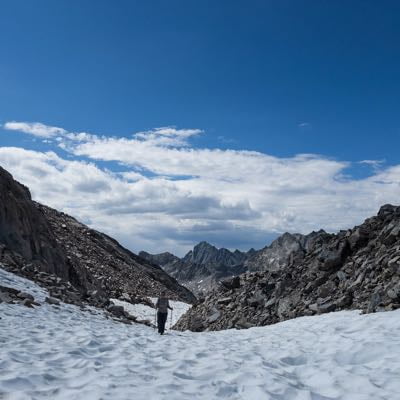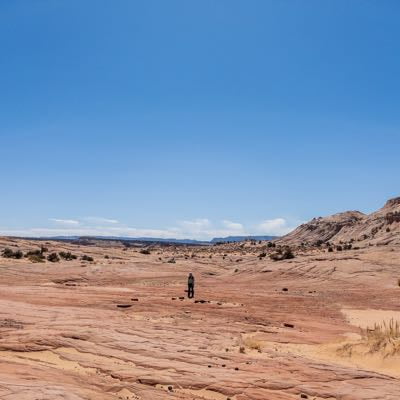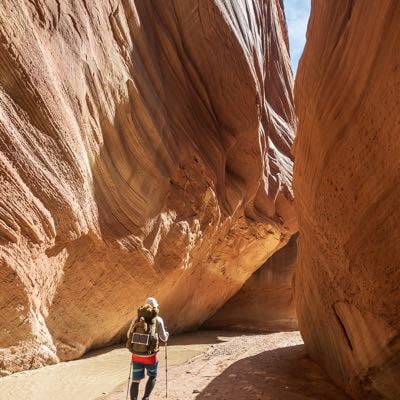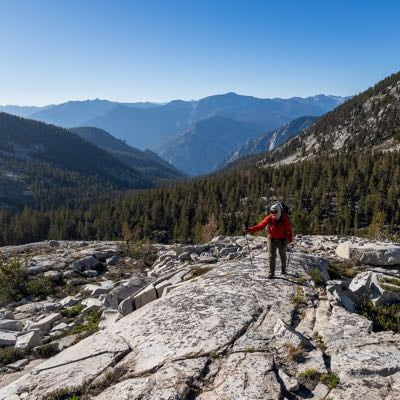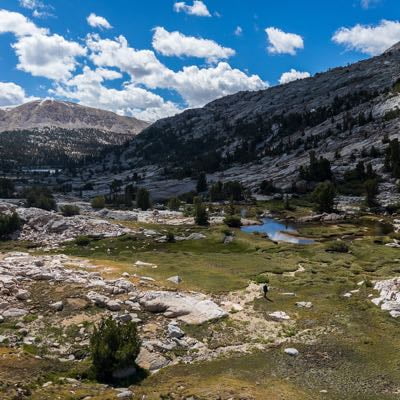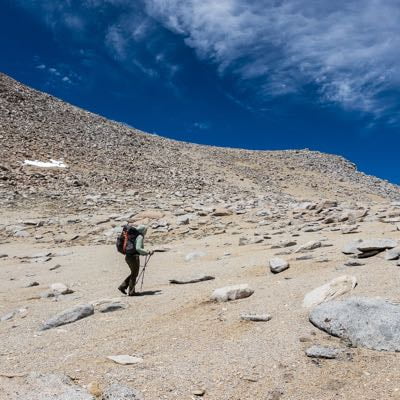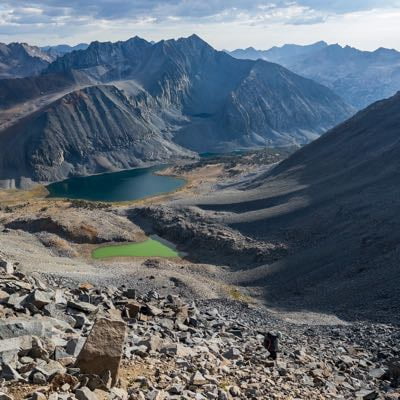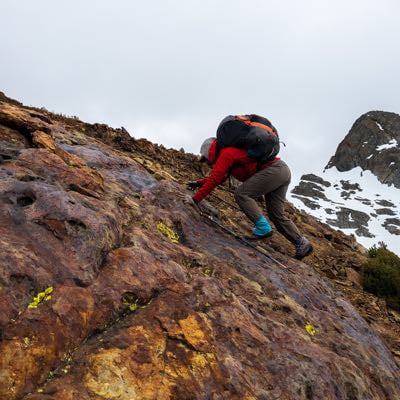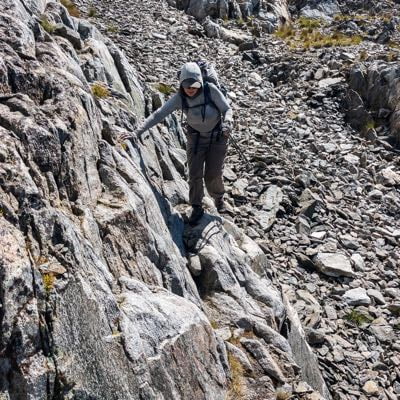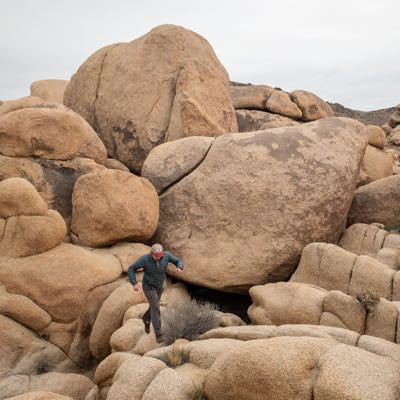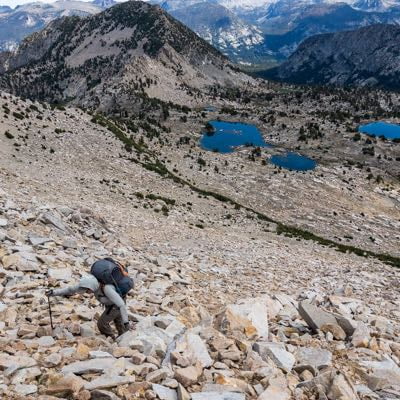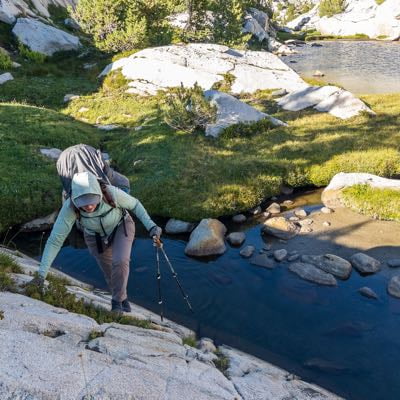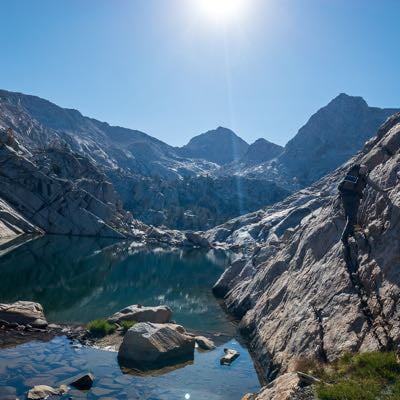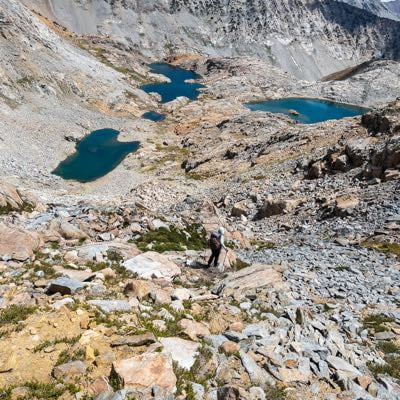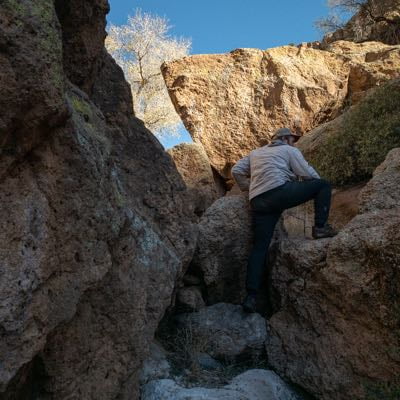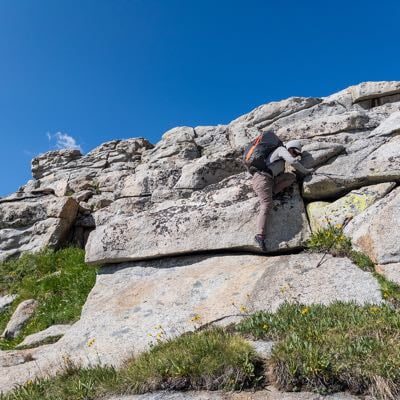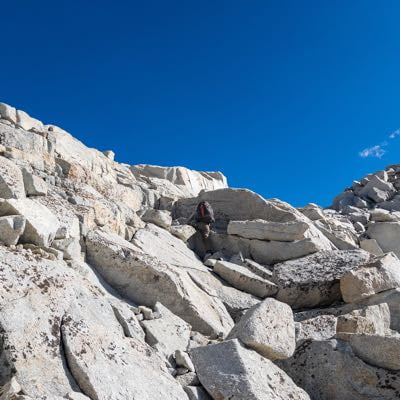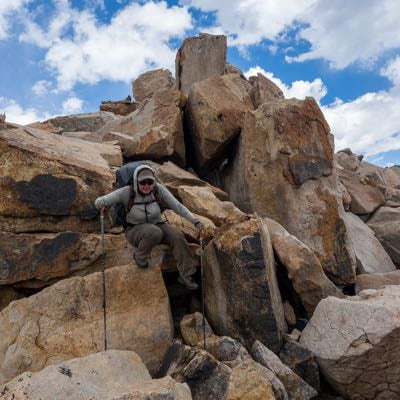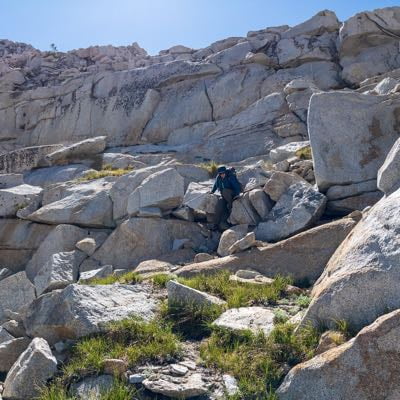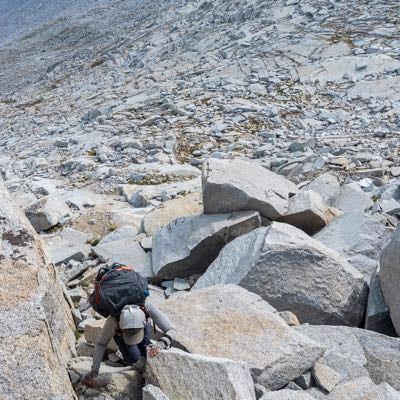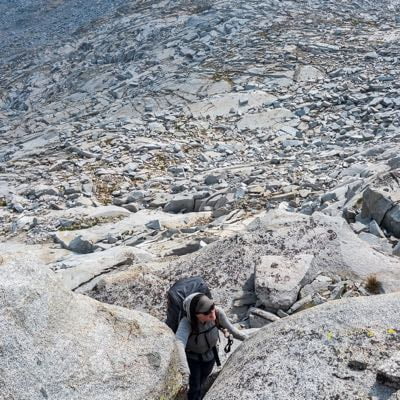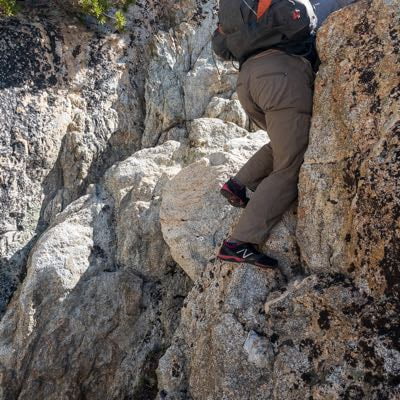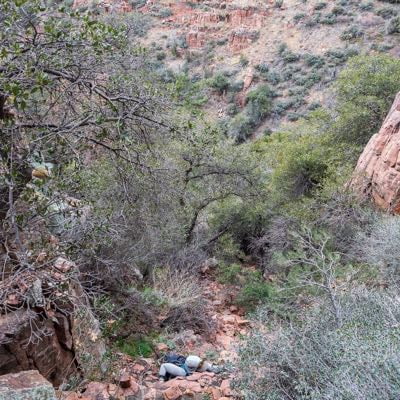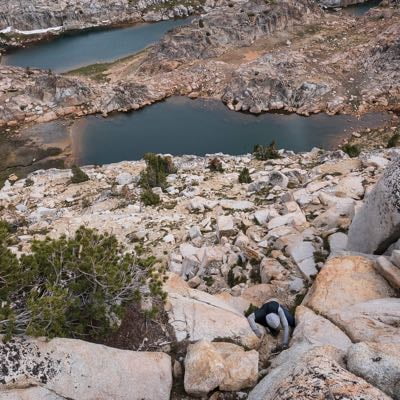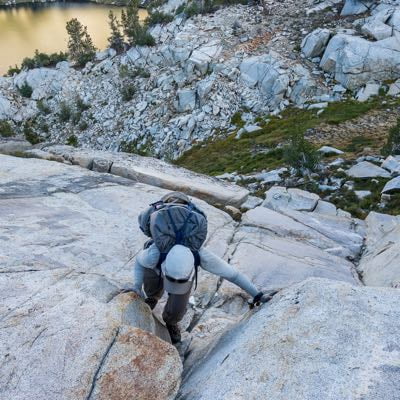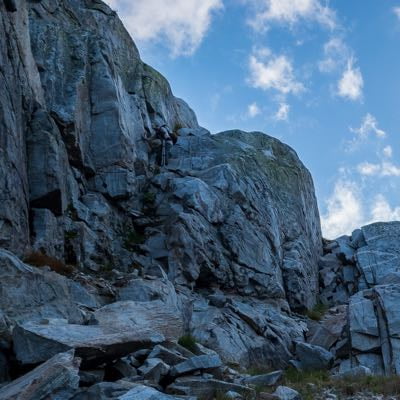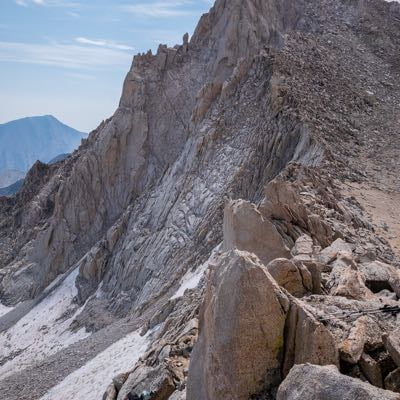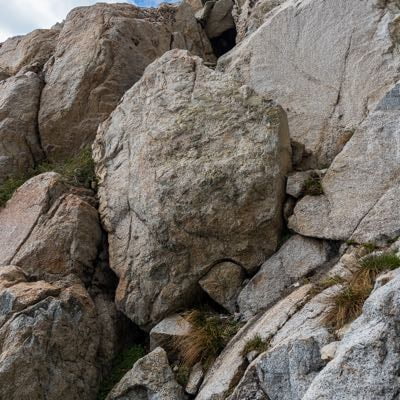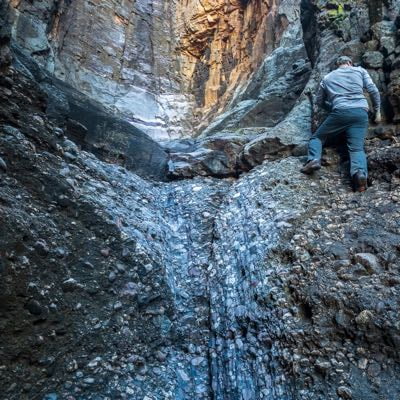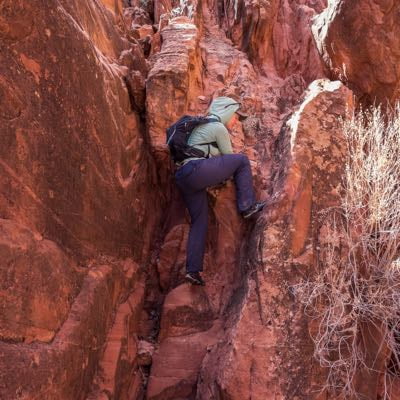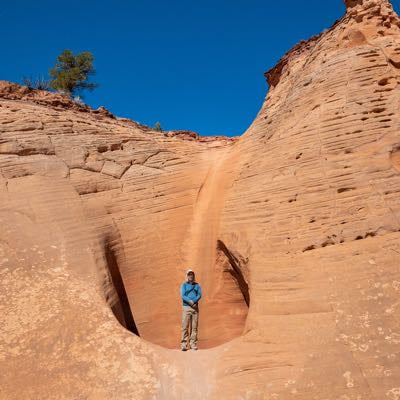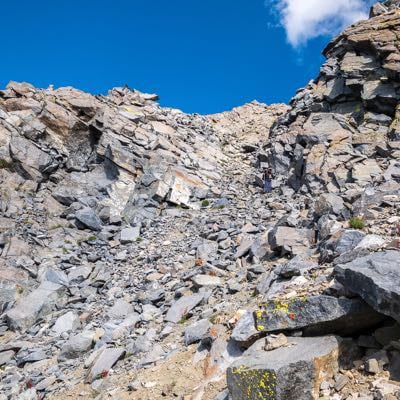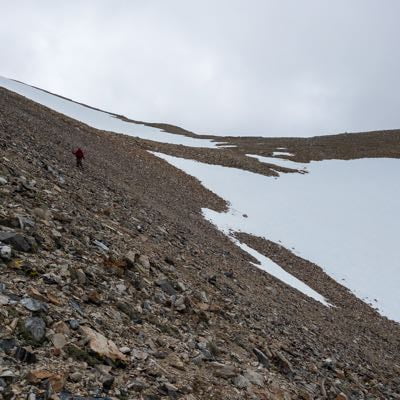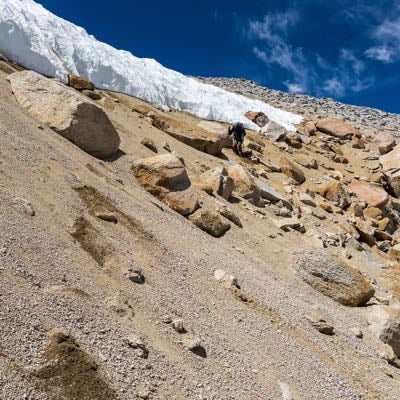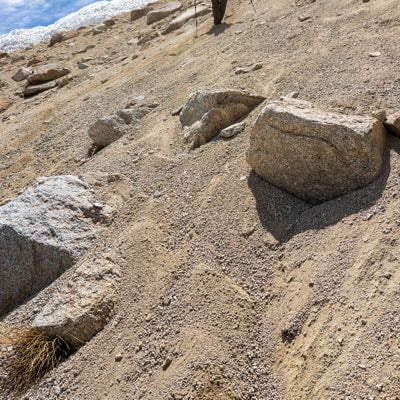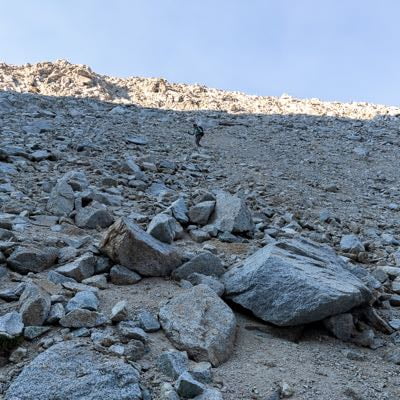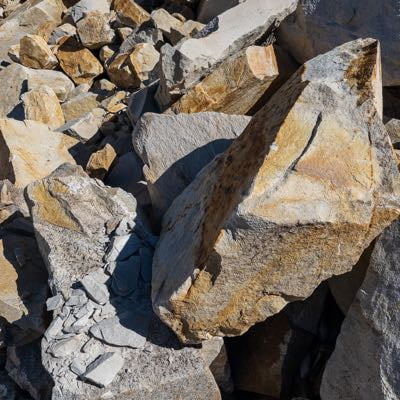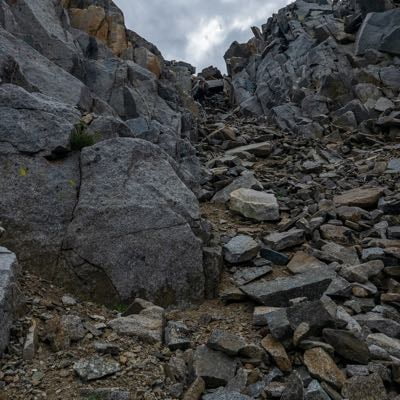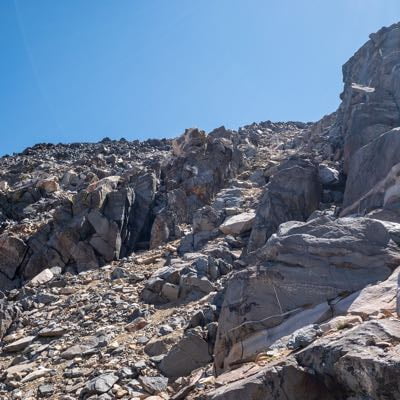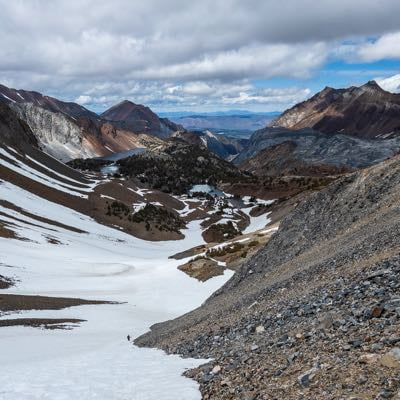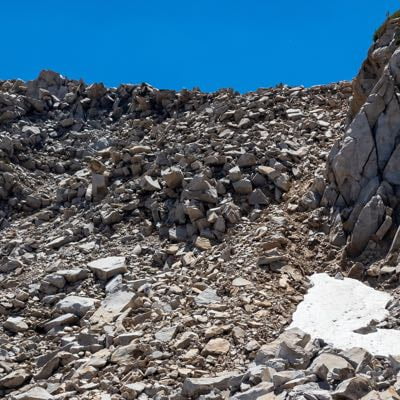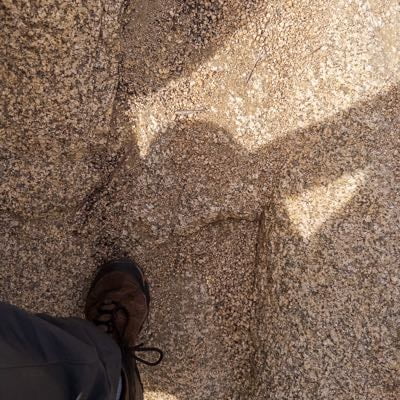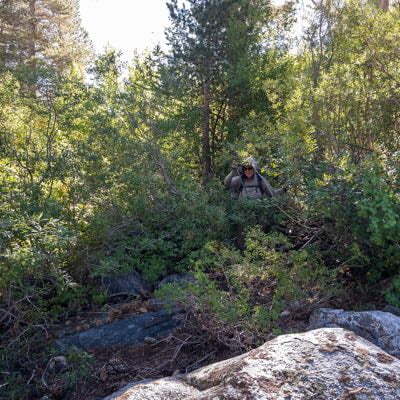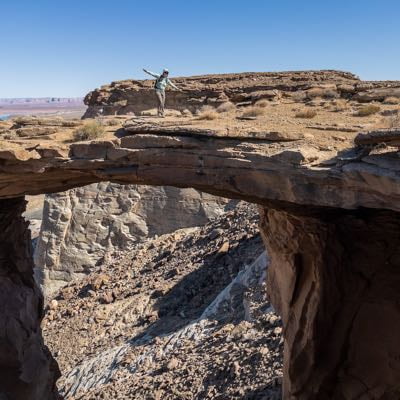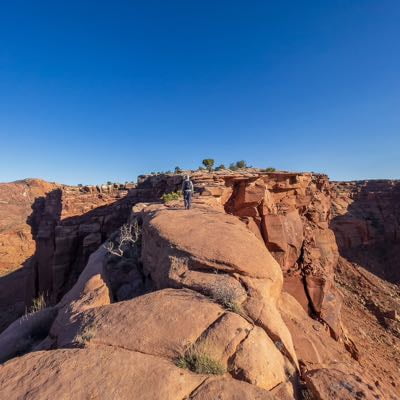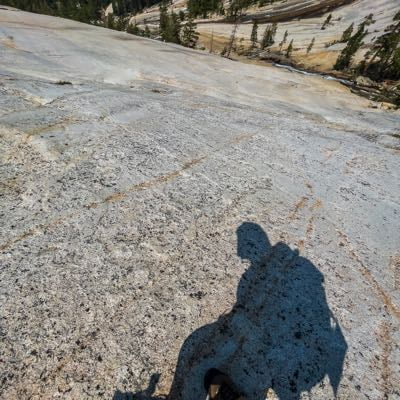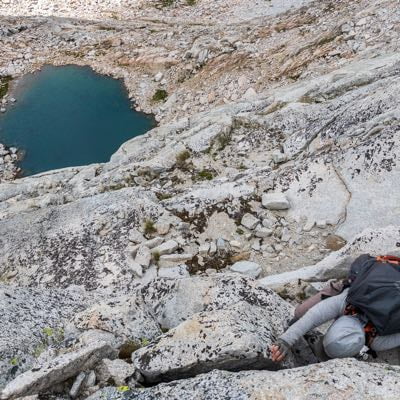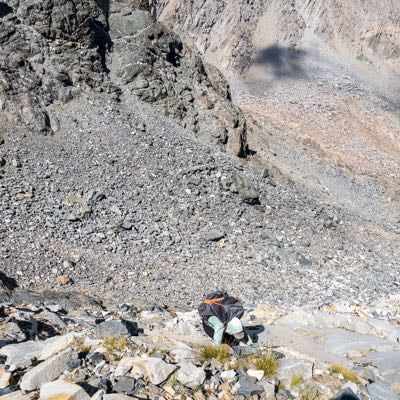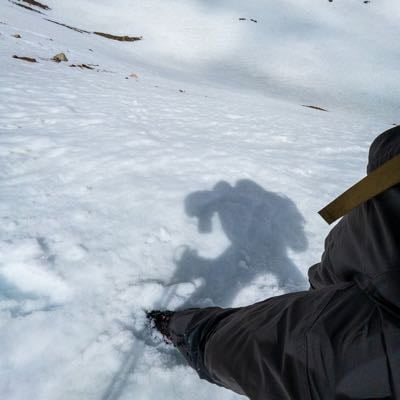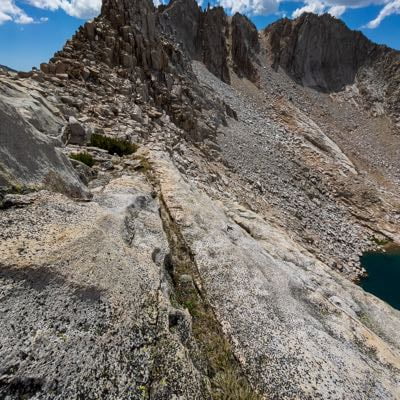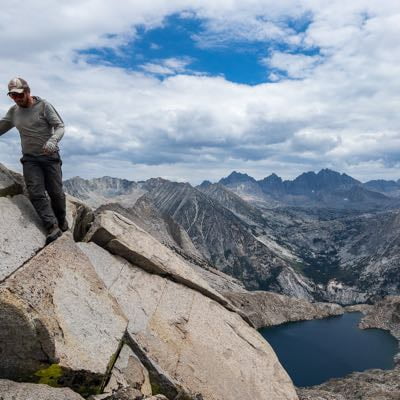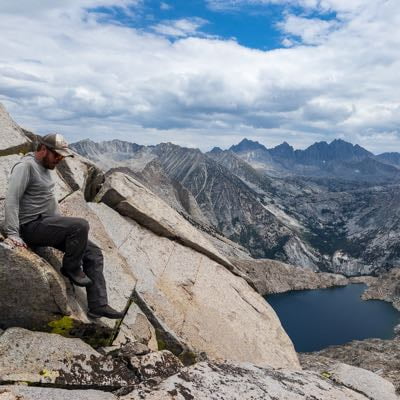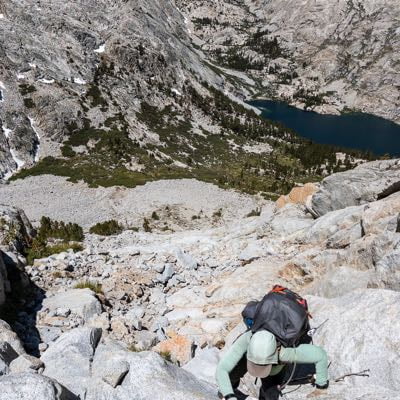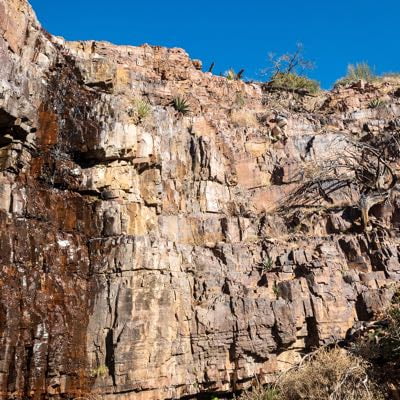Updated YDS Proposal
You can read more about the what and why on the related thoughts page. Major issues that are under consideration are listed in this github repo, feel free to commment or add a new one!
Classes (types of movement over terrain)
Classes are used to break down the 'types of movement' or 'modes of travel' over terrain and the general level of technique required. They are abstractions and do not always directly map to difficulty or how preferable a route is. They are meant to be a basic check on your limits and comfort level as well as to set expectations for what is considered "on route".
Class 1: Walking
You're on relatively even ground though occasional obstacles may occur (roots, rocks, etc) though you can usually either step around them or they're not significant enough for you to need to use your hands (or poles) for balance. The grade generally won't be above that of a well constructed maintained trail (around 20 degrees of slope). If you need to heelbrake, crabwalk, sidestep or use other advanced forms of "walking" that one wouldn't use on a formally maintained NFS Class 2-5 trail it isn't walking anymore.
Complex routefinding is rarely necessary to have a safe and enjoyable experience.
Class 2: Surefooted Hiking using Hands for Balance
This is moving over more rough or rugged terrain. The ground that is uneven or steep enough that it'd be reasonable to expect people to occasionally use their hands or trekking poles for balance. This is commonly talus, but it can also be steep enough slopes of any surface. If talus isn't so large you need to climb over it, but you need to put a hand on a piece here or there to support yourself it's Class 2. While experienced people can jog over stable talus it's still uneven ground that requires a different mindset and skillset than just walking or casually hiking. If you need to "read" the ridges on a slab to safely ascend or descend it, if scree is sliding out under your boot, if you're sliding down duff due to steepness, or you need to dig in with poles not to slip it falls into Class 2. There's no hard numerical slope angle where Class 1 ends and Class 2 starts, but around a 30 degree slope or so it's probably not Class 1 anymore.
Routefinding can become quite complex, as portions of the route are often obscured.
Class 2.5: Mantling / Short Drops
You are using your hands to pull your body up, but you're not quite "climbing". This would be obstacles thigh to head high that can't be stepped over but you can get a leg over by your third move (and most often sooner). You never have both feet off the ground for more than a few seconds.
Having to butt scoot down something, mantle onto a rock, drop down a short ledge, awkwardly flop a knee or leg on top of something and pull yourself up, etc falls into 2.5. It is the least photogenic class to ascend or descend! Clambering onto and then off large deadfall would be a non-rock example of 2.5. People very sensitive to heights may find it discomforting while those with more experience might not percieve it as any worse than normal Class 2.
Class 3: Scrambling / Simple Climbing
You are using both hands to hang and hold onto the rock and climb, with your feet needing to find footholds to continue ascending. Novices may feel uncomfortable, but the holds are large and easy to locate. Your feet will be off the ground and supporting your weight as you climb for extended periods of time, and even short stretches can be uncomfortable for people with a fear of heights. Class 3 is possible on lower angle slopes than you'd think if a small cliff or large talus that can't be bypassed. Moving on terrain where your feet are sometimes on the ground but where you are holding onto the sides of a steep chute or pieces of talus to pull yourself up would fall under the simpler side of Class 3.
Secor's favorite description was given by Steve Roper: “Imagine climbing a steep, narrow staircase outside of a tall building without benefit of a railing: scary but easy.”
Class 4: Climbing (rope recommended)
A noticeable step up from class 3 in terms of technique required. Class 4 is vertical or close to it, with smaller holds and is often exposed (though it can also be a short but more technical section that would fall under the PG modifier below). A classic example of unexposed Class 4 would be the wet steep walls on the southern side of Cirque Pass people get into when they're off-route. Class 4 generally should not be done with a full pack for any considerable length, and even unencumbered many boots and shoes will start to fail to hold on the more subtle terrain. You'll generally want either more traditional boots with "structure" or a lightweight shoe that conforms to the foot for better feel and independent use of foot muscles for control. Footwear with roomy floppy toe boxes that are comfortable on trail will likely slip off the smaller holds. Rope is advised to be be in use though experienced individuals will often go without at their own risk.
Exposure risks aside, fit individuals with no climbing experience that have a good sense of balance, proper footwear, and aren't overly encumbered can generally make their way intuitively up short runs of Class 4 terrain. Expect overlap in the lower difficulties of Class 5 (up to around 5.5) inside what's considered Class 4. If that doesn't make sense to you and you're interested in geeking out on technical details, this is an epic rant on Class 4. Class 4 is kind of a mess, but it's still a useful tool for describing moving over terrain.
Class 5: Technical Climbing (rope expected)
Class 5 been updated throughout the years as a living document. What most people visualize as Class 5 realistically starts around 5.5 or 5.6.
Class 1-3 Terrain Modifiers
These are used to point out consequential aspects of the terrain itself (as opposed to how you move on it) that could increase risk or discomfort to someone otherwise generally comfortable with the class of movement they're doing. For example, someone could generally be fine with Class 2, but not when it's loose enough that talus is sliding down or there are fatal drops.
Occasionally wobbly talus or some dirt/duff/scree that moves around a bit is considered within the normal bounds of standard terrain. The lack of a modifier doesn't mean that everything is perfectly stable - just that there shouldn't be any significant impacts under normal conditions.
L - Loose
This is smaller talus, deep sand, gravel, scree, or duff which shifts when stepped on, but self-brakes (stops itself via friction) within a foot or so and will not cause a landslide. This terrain is generally much more pleasant to go down (boot ski) than up (slogging two steps up, one step down).
This can include:
- Class 2: Boot skiable sand
- Class 2: Boot skiable small scree/talus
- Class 2: Football+ sized talus that shifts and wobbles but mostly settles back into itself.
- Class 2: Football+ sized talus that slides a little on on the slope and then settles.
- Class 3: A slope which is steep but loose enough you need to hold on to it / dig in your trekking poles in order to proceed up it (or safely go down it).
C - Collapsing
The extreme version side of looseness, where talus or scree will go into a lengthy landslide that can either impact or (partially) bury someone or the terrain is fragile enough to break into falling pieces.
This can include:
- Class 2: A slope of scree that will slide a few feet above and below you. This can be near impossible to ascend, but enjoyable to ski if you have the technique and psyche.
- Class 2: Talus that can slide dozens of feet above and below you. Zig zagging out of the slide path is critical.
- Class 2: Large talus that can be triggered into falling or rolling by moving near or on it.
- Class 3-4: Climbing on unstable talus (generally above the angle of repose, 45°) that can collapse into a slide from the act of climbing it. Choss.
- Class 3-4: Climbing on fragile rock that can break off from the force exerted on it by climbing. Also described as choss.
Note: Terrain which is normally relatively stable can become collapsing when saturated with early season snow melt, or during or immediately after heavy rain. Passes that traditionally held snow but due to climate change are now often snow free in the summer can be particularly dangerous as it's likely there may not be enough sand/dirt/gravel around talus to anchor it.
S - Skidding / Sliding
Terrain which stays stable but on which your feet can skid or slide off of. A common form of this terrain is sand or pebbles on top of otherwise hard packed dirt or slab, which is often explained as walking on ball bearings. Going up is generally preferred in order to have more control, when going down your momentum can easily lead to a loss of traction. Poles can help depending on the surface if a boot slides out. Heavily used trails can generate this terrain, as foot traffic perpetually kicks up dirt and sand onto granite.
Skidding terrain which is also exposed (like King Col) should only be done with extreme caution, as losing traction could be fatal.
B - Bushbashing
Bushes are at least waist high and there are no paths between them for at least 10 feet - you literally have to press past resistance to move forward. Occasional bushes one has to brush by here or there, or areas of manzanita with sandy paths weaving through them are just a sad part of life.
Class 1-4 Fall Risk Modifiers
Class 5 has "movie rating" risk modifiers regarding the distance between aid placement - for unroped travel in Class 1-4 terrain they will refer to the general risk associated with a fall due to exposure. It's worth noting that you can sprain your ankle stumbling in a parking lot or crack your head open tripping on a sidewalk, so you're never risk free. :)
G - Trivial
Terrain: You might trip, but if you do you aren't going to fall any further than the ground under your feet.
Psyche: None aside from watching out for a twisted ankle etc on rougher terrain.
PG - Short Falls
Terrain: You are are using your hands for balance on talus, going up a moderately steep slope, mantling up to a higher ledge, near a very near a short cliff, or on a very short scramble or climb. You may fall, but it generally won't be more than 5-10 feet above the ground. Still enough to do damage if you land wrong though.
Psyche: Some people will be very uncomfortable, but the vast majority will be aware of it but not be too worried depending on the class of terrain they're going over (the lower the simpler, and hence in general a lower risk of falling).
Note: Class 4 terrain is traditionally expected to be a long exposed approach to a peak, but this more technical terrain can still pose a significant obstacle to someone, especially with a large pack on, even when less than 10 feet high. Labeling Class 3 or 4 sections "PG" indicates a more advanced type of movement over terrain even if it isn't what a climber or mountaineer would consider exposed. See photos above of Class 3 & 4 for examples of PG.
R - Indirect Long Falls
Terrain: You could have a long fall (likely fatal or ending in serious injury), but there's enough space between you and the drop that you could still likely recover from a mistake or loss of traction without falling (or have it be a short fall instead). Serious injury or death is still possible on this terrain, but would not be expected.
Psyche: Some people will still be perfectly comfortable doing this, especially on simpler terrain, but people that are sensitive to heights could be very uncomfortable. People with a “head for heights” will notice the risk but not be overly concerned by it.
X - Direct Long Falls
Terrain: The terrain allows for longer falls that are “directly exposed” enough there is very little to no margin to recover from a loss in traction. A single mistake could easily lead to serious injury or death.
Psyche: Most people will be uncomfortable on this terrain regardless of it's simplicity or complexity and those with experience that are comfortable being on it must take it seriously.

